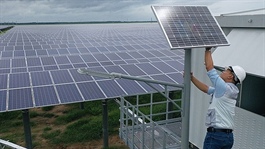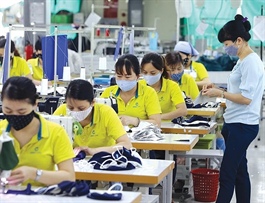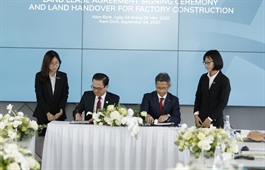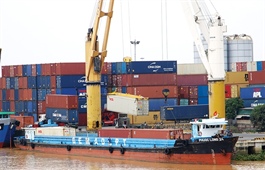Viet Nam to face power shortages
Viet Nam to face power shortages
Viet Nam would face the risk of power shortages from 2021-25 due to slow progress at many large power projects both in the northern and southern regions, according to the Ministry of Industry and Trade (MoIT).

A report submitted by the National Assembly's Economic Committee on the current situation and solutions for electricity development towards 2030 to meet the requirements of socio-economic development showed that high economic growth over the past two decades had caused electricity demand to jump. Electricity output increased by about 10 times from 1990 to 2019.
A series of projects have been launched in accordance with a power master plan to meet the demand. The average growth rate of electricity sources from 2011-15 reached 13 per cent a year. However, from 2016-19 the growth of power source construction decreased significantly with a yearly average of only 8 per cent, of which the biggest decrease was hydropower (5 per cent) and coal thermal power (10 per cent).
Notably, 10 major power projects were supposed to go into operation from 2016-20 according to the adjusted plan, but they have been delayed beyond 2020. The projects in question are Song Hau 1 (1,200MW), Thai Binh 2 (1,200MW), Long Phu 1 (1,200MW), Na Duong 2 (110MW), Cam Pha 3 ( 440MW), Cong Thanh (600MW). Renewable energy sources (mainly solar power) have grown much faster than their targets thank to the impacts of development incentive policies.
Meanwhile, the country's power sources have next to no backup for 2021-25. If thermal power units are unable to operate on a stable basis, or there is an issue with coal supplies, the the sector will be affected.
In addition, securing fuel sources for power generation has also been potentially risky. Vietnam National Coal and Minerals Group (Vinacomin) has cancelled a project to build a Mekong Delta coal transshipment port due to a failure to reach a location agreement, and there is currently no solution in sight.
The southeast gas field that supplies the Phu My thermal power cluster will start to run out after 2020, and shortages of about 2-3 billion cu.m a year are forecast by 2024. This shortage will increase rapidly to over 10 billion cu.m by 2030.
To ensure the balance of power supply and demand from 2021, the MoIT said it was studying operational solutions to maximise the use of existing power sources and enhancing the development of renewable energy sources that could be constructed quickly.
Specifically, it will convert the fuel used by the Hiep Phuoc 375MW Thermal Power from fuel oil to liquefied natural gas (LNG). Solar and wind power sources will also be exploited. These power sources need to be put into operation from 2021-23 to compensate for delayed supplies from incomplete thermal power plants.
The ministry will continue to sign purchasing contracts to import power from Laos in accordance with a Memorandum of Understanding signed between the two countries. The total power import capacity from Laos in 2025 will be about 3,000MW. It will also consider increasing the output of electricity imported through a voltage of 220kV from China.
The MoIT is completing a legal framework for monitoring and regulating the electricity market to build and operate a competitive, transparent, fair and non-discriminatory power market.
It will also restructure the power sector in accordance with the development levels of the electricity market and continue to equitise generating units according to approved plans, while separating the cost of electricity distribution and retail businesses. It will separate the electricity market operator into an independent accounting unit under Viet Nam Electricity (EVN).
The mechanism for electricity retail price adjustments according to fluctuations in input parameters will also be amended, replacing Decision No 24/2017/QD-TTg.


























